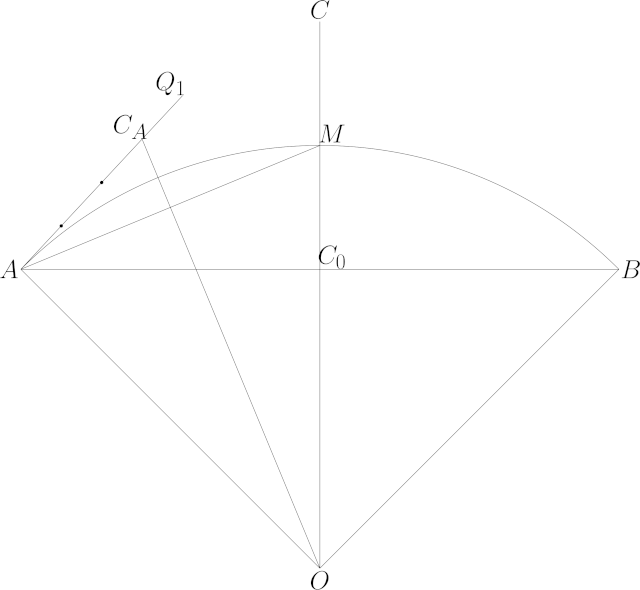# Curves
# 1 Arcs
Approximating a circular arc by a cubic Bézier curve
I needed a method that was robust in the limit of near-straight arcs as \(r \to \infty\), here’s what I came up with based on fang’s answer on M.SE.
We want to approximate an arc through points \(A\) and \(B\) with radius \(r\). If instead we have 3 points, we can use the side lengths \(a, b, c\) of the triangle formed by the points to calculate \(r\):
\[\begin{aligned} s &= \frac{1}{2}(a + b + c) \\ r &= \frac{a b c}{4 \sqrt{s (s - a) (s - b) (s - c)}} \end{aligned}\]
Let \(C_0 = \frac{1}{2}\left(A + B\right)\) be the midpoint of \(A\) and \(B\). Let \(C = C_0 + D\) (where \(D\) is perpendicular to \(AB\)) be the control point of the quadratic Bézier curve through the points \(A\) and \(B\) with its midpoint at the midpoint of the arc, then \[|D| = 2 r \left(1 - \cos\left(\sin^{-1}\left(\frac{|A - B|}{2r}\right)\right)\right)\] Naively computed this has catastrophic cancellation, so I used series expansion, with \(x = |A - B|, y = \frac{x}{r}\): \[|D| = x y \left(\frac{1}{4} + \frac{1}{64} y^2 + \frac{1}{512} y^4 + \frac{5}{16384}y^6 + \frac{7}{131072} y^8 + O(y^{10})\right)\] If \(y\) is not small enough for the series to converge quickly enough, subdivide the original arc into smaller pieces and retry.
This quadratic Bézier is not a good approximation of a circular arc. But if we split the original arc in half (the midpoint of the arc is \(C_0 + \frac{1}{2} D\)), and then find the quadratic control points \(C_A\) and \(C_B\) for each half as above, they can be modified to give the control points \(Q\) of a cubic Bézier curve for the original arc: \[\begin{aligned} Q_0 &= A \\ Q_1 &= A + \frac{4}{3}\left(C_A - A\right) \\ Q_2 &= B + \frac{4}{3}\left(C_B - B\right) \\ Q_3 &= B \\ \end{aligned}\]
A diagram may help:
